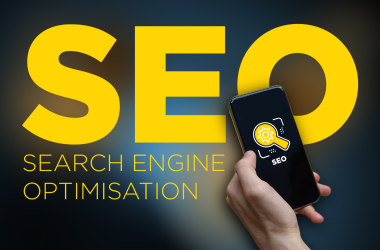Technical SEO: What It Is and How to Use It
Technical SEO is a complex field with many web design and development aspects. This blog will discuss the definition, benefits, issues, and how to use it effectively in the business setting. What is Technical SEO? Technical SEO is a method of optimizing a website for search engines using techniques such as tags, rich snippets, alt tags, and canonical tags. The goal is to improve the visibility and ranking of a website in search engine results pages (SERPs). There are many different ways to achieve technical SEO, but some common techniques include the following: Use keyword research to identify key terms that are relevant to our business and target them with appropriate content Improve site structure and design so that all pages load quickly Create well-optimized titles and descriptions Add relevant keywords to image files and incorporate keyword-rich metadata into blog posts Create 301 redirects to help fix broken links Monitor search engine traffic trends to make changes as necessary Types of Technical SEO Technical SEO is optimizing a website for search engines by improving the overall visibility of its content. It can be broken down into three main areas: on-page optimization, off-page optimization, and link building. On-Page Optimization On-page optimization is the practice of optimizing individual web pages for improving their visibility and rankings on search engine results pages. This often involves optimizing content, headings, meta tags, URLs, and other on-page elements to make them more appealing and relevant to both search engines and users. While this may seem like an easy task initially, on-page optimization can be more complex than anticipated. For instance, it may require you to have the knowledge of creating relevant internal links within the website, page speed optimization, and the implementation of structured data markup. If you are not familiar with these, seeking the help of an experienced SEO Consultant Manchester or an individual of similar caliber would be a more viable and practical alternative in achieving success with your on-page optimization endeavors. Off-Page Optimization This involves creating positive backlinks to our website from high-quality websites. We can do this by linking to other articles or blog posts relevant to our topic and submitting articles to reputable directories and forums. Link Building Finally, it would help if we built links to our website from high-quality websites. This can be done through article submissions to popular blogs and site reviews. You can also hire digital marketing services that specialize in link building. There are many out there – rhinorank has good reviews and others in your area might be good too. Having a digital marketing campaign built around link building can help increase your reach by quite a bit. Benefits of Technical SEO Some of the benefits of technical SEO include the following: Boosting Traffic Improved visibility can increase our site’s traffic. Technical SEO can help us target specific audiences with more accurate marketing efforts. Additionally, it can help improve search engine rankings and drive more targeted traffic to our site from high-traffic sources like Google and Yahoo! Search Engine Results Pages (SERPs). This explains why big brands opt for the help of firms like Digital Edge International – https://digitaledgeint.com/ to employ technical SEO. Increased Conversion Rates When done correctly, technical SEO can help improve overall website performance by assisting users in finding what they’re looking for faster. And when coupled with the expertise of a growth marketing consultant, the conversion rate optimization or CRO can be a lot higher. They take into account conversion research, UI/UX improvements and utilize A/B testing among others to figure out what strategies would best fit a certain growth curve. The idea is to understand website analytics, identify areas for improvement, and develop effective strategies to optimize conversion rates. And a combined approach, in many cases, can lead to higher revenue, meaning more visitors who ultimately become customers or leads. More Productive Businesses Technological advances mean businesses now have access to resources that weren’t available just a few years ago. By doing research into technical SEO and taking guidance from eminent SEO experts, businesses can learn the latest best practices to structure their sites optimally. For example, if you visit Tom’s profile on zoominfo or similar platforms, you might want to explore their professional background, view their portfolio, or connect with them for potential collaborations. This will enable businesses to stay ahead of the competition by leveraging cutting-edge SEO techniques and harnessing valuable insights from prominent SEO professionals. Targeted Marketing Technical SEO can help improve our site’s visibility and target specific audiences with more accurate marketing efforts. As a result, we can reach customers more likely to be interested in what we offer. This can lead to increased business productivity and lower costs associated with marketing campaigns. Increased ROI Technical SEO often improves ROI (return on investment). One can often achieve higher traffic and conversion rates by improving website performance and visibility without increasing spending significantly. In some cases, this could lead to a significant increase in revenue. Issues With Technical SEO Technical SEO is the process of optimizing a website for technical efficiency. This includes ensuring all pages load quickly, avoiding broken links and coding issues, and using correct metadata to improve search engine ranking. While there are many aspects to technical SEO, three main areas of concern are page speed, Broken Links Checker, and Metadata. Page Speed: Every page on a website should load quickly. Poor page speed can slow visitors’ clicking through our site, negatively impacting our rankings. To ensure the pages load quickly, use HTML5 and CSS3 markup, minimize HTTP requests and minify the code. Broken Links Checker: Checking for broken links is essential for ensuring the site remains search-engine friendly. A broken link can lead to a loss of organic traffic as potential customers try to access our site but are instead directed to an incorrect or no-longer-functioning page. By checking for broken links regularly, we can prevent these losses and improve our site’s ranking potential. Metadata: Correct metadata can help improve search engine ranking by providing information such as title tags and meta descriptions that describe the content of the pages on our website. Adding this information correctly can increase click-through rates (CTR) and make it easier for visitors to find the information they want. While all aspects of technical SEO are essential, ensuring pages load quickly and avoiding broken links are the two main areas of focus. Following these guidelines can help improve our site’s ranking position and ensure visitors have an enjoyable experience while browsing. The Technicality of Technical SEO Technical SEO is optimizing a website for search engines using techniques such as on-page SEO, link building, and keyword research. Technical SEO can help our website rank higher in search engine results pages (SERPs) and increase online traffic. However, it’s important to remember that technical SEO isn’t a magic wand; it won’t solve all our website’s problems. Some factors damaging our site’s ranking include poor content quality, outdated or duplicate content, and spammy links. So don’t forget to focus on other areas of our website marketing strategy when planning the technical SEO efforts. Overall, technical SEO is essential to any website’s marketing strategy. However, it’s important to remember that it’s only one part of the puzzle and that other areas of our website marketing strategy should also be accounted for.



